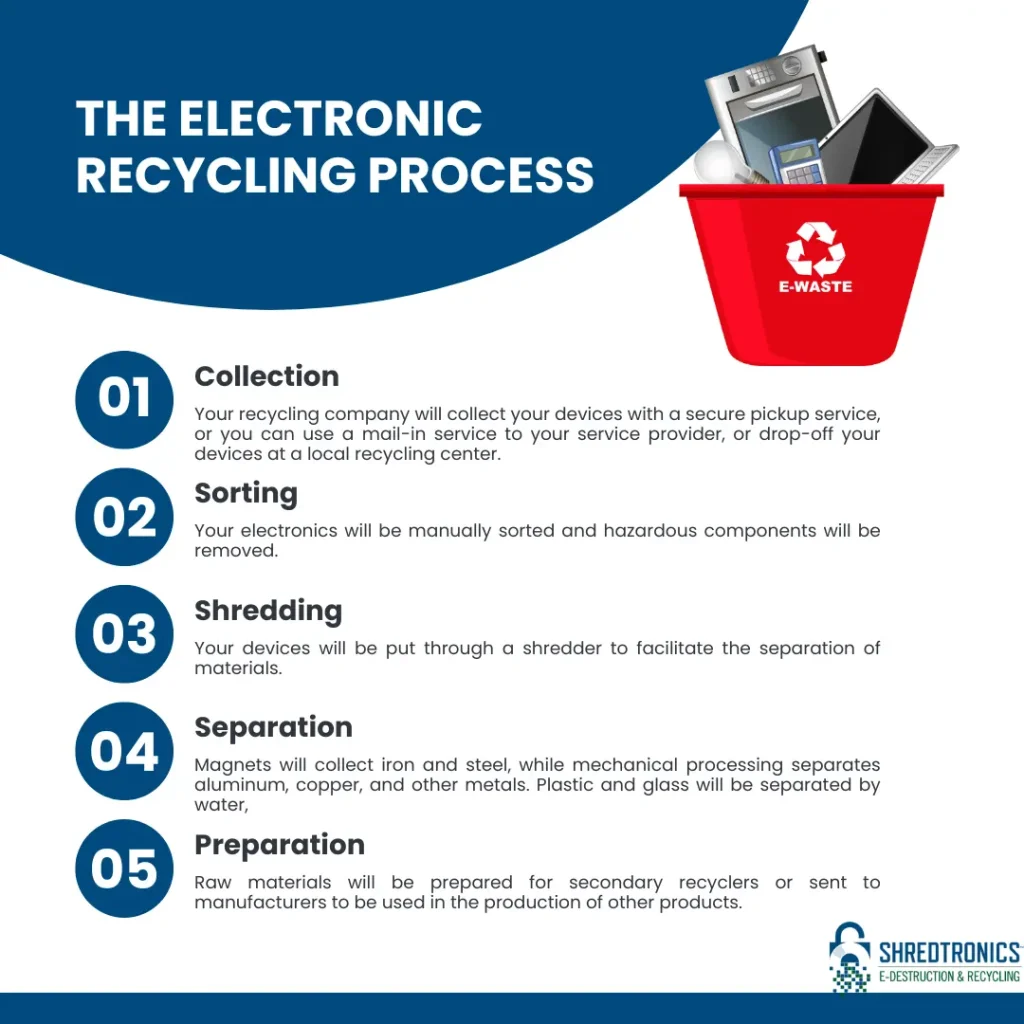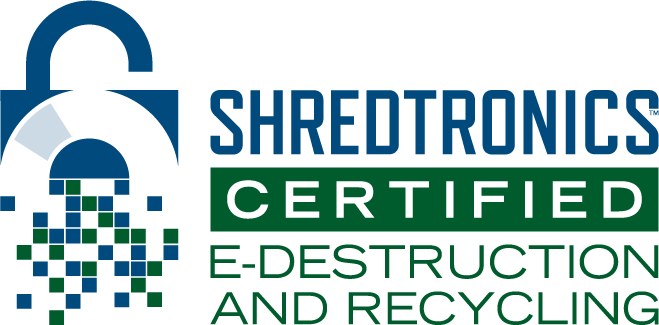
Electronic waste (e-waste) is the fastest growing waste stream in the world. As technology advances, the lifespan of our electronics is getting shorter, creating a dramatic increase in e-waste. The World Counts estimates that we recycle only 12.5% of e-waste. The rest ends up in landfills, incinerators, or we export illegally to other countries. However, your devices contain valuable materials that, when you properly recycle them, you can reuse instead of ending up in landfills. We’ll explore the electronic recycling process, shedding light on how it helps reduce waste, recover precious resources, and contribute to a more sustainable future.
Common Types of E-waste
E-waste is an all-encompassing term to describe discarded electrical equipment that has come to the end of its useful life. Typical types of e-waste are electronics you frequently replace such as cell phones, TVs, computers, laptops, and tablets.
The good news is nearly all e-waste is recyclable. You can refurbish and resell your working devices can be, while others can break down and separate by material. However, we can salvage and reuse plastic, glass, and precious metals. According to the EPA, for every 1 million cells phones we recycle, we can recover 35 thousand pounds of copper, 772 pounds of silver, 75 pounds of gold, and 33 pounds of palladium.
The Electronic Recycling Process

The recycling process is complex because it varies by device, materials, and technology. Electronics contain harmful toxins that only trained professionals should handle. Here is an overview of how the process works:
- Collection: Your recycling company will collect your devices with a secure pick up service, or you can use a mail-in service to your service provider, or drop off your devices at a local recycling center.
- Sorting: Your electronics will be manually sorted and hazardous components will be removed.
- Shredding: Devices will be put through a shredder to facilitate the separation of materials.
- Separation: Magnets will collect iron and steel, while mechanical processing separates aluminum, copper, and other metals. Water separates the plastic and glass.
- Preparation: Raw materials will be prepared for secondary recyclers or sent to manufacturers to be used in the production of other products.
Why is Electronics Recycling Important?
You are well aware of the negative effects chemicals like lead, mercury, and cadmium have on the environment and human health. These toxins have lethal repercussions for the atmosphere, wildlife, and people working and living near landfills.
Furthermore, we routinely export e-waste to developing countries for inexpensive, improper recycling. The laborers in these countries work in unsafe and unregulated conditions to collect raw materials to sell. They spend their days touching and inhaling toxic materials and chemicals causing serious health damage to themselves and those nearby.
By recycling your electronics you will not only be helping to conserve natural resources and energy, but you will be protecting the planet and people of the world from the damage caused by improper disposal of e-waste. Therefore, it is important to consider the very serious ramifications of throwing away your old electronics.
Start the Electronic Recycling Process with ShredTronics Today!
If you are in need of electronics recycling services, ShredTronics is here to help. We specialize in recycling solutions that are convenient and reliable. Contact us at (844) 648-4908 or fill out the form to begin your recycling project today. Within minutes, we will send you free quotes from local recycling providers.











